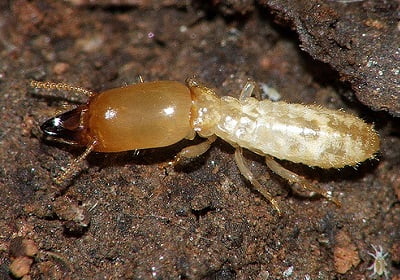Critters Info
Pest Control Technologies
Rats & Mice

Description
● Rodent: a gnawing mammal of an order that includes rats, mice, squirrels, hamsters, porcupines, and their relatives, distinguished by strong constantly growing incisors and no canine teeth. They constitute the largest order of mammals.
● Rodent infestations can cause considerable damage to infested buildings - rats & mice also will chew on the insulation around wires, causing a real threat of fire.
● Rodents are also known carriers of many diseases and prove a health risk to humans. Rodent populations grow quickly and steadily. Rodent control is best started prior to infestations.
● There are three main species of rodents regarded as pests in South Africa - the black rat, the Norway rat and the house mouse. It has been calculated that 30 rats are born every second of the day. Among the vertebrates, rodents are rated as only second to the human race in terms of their destructive abilities. So, if your property should become infested, there is clearly a need for some prompt remedial action.
● Rats (especially Roof rats) are wary of new objects, and are constantly exploring surroundings and notice changes and will approach with great caution. Within a rat colony, they may be a few rats that are extra cautious and manage to avoid traps or eating rodent baits.
● Although it eats only about 3 grams of food per day, it is estimated that a mouse contaminates and destroys 10 times more food than it eats as it leaves its droppings, nibbles on packages, and leaves numerous partially eaten foods behind – leaving all of it inedible and unfit for humans – or pets.
● Rodent’s razor-sharp incisors is continuously growing. Because they do not stop growing, the animal must continue to wear them down so that they do not reach and pierce the skull.
● Rodents generally have well-developed senses of smell, hearing, and vision.
Signs to look & listen for, or smell
- Rodent droppings.
- Gnaw marks, gnawed holes or damage to door edges or cornices.
- Rodent (rat or mice) nests or nesting material ranging from wood, paper, books, cloth, insulation in roofs, upholstery, etc.
- Scampering noises - sounds like the soccer team is playing on the ceiling.
- Unusual pet behaviour - incessant barking or scratching near opening under wendy's, etc.
- Strong urine or ammonia odour in confined spaces e.g. roof or pantries.
Benefits of having Pest Control Technologies
- Inspection is an important step in getting rid of rodents (rats or mice). Once we know the location of the rats, we can implement a treatment plan.
- Exclusion is an important part of rodent control techniques. Mice can enter an opening as small as 6 mm and rats 9mm.
- Because rodents are a nuisance and a danger to public health, we have to control them. This involve poisoning and/or trapping, methods that are safe and effective. Integrated pest management: surveys to determine the size and location of the rodent population, to determine the acceptable levels of rodent activity at which to intervene), treatments and evaluation of effectiveness of the treatment, with follow up assessments.

Bird Proofing

Description
- Many of the bird species in South Africa are good to have around, thanks to their attractive plumage and birdsong. Urban Bird Control has become a necessity as the predator bird population fade, and the amount of artificial shelter and easy-to-find food sources escalate, pest-bird numbers are starting to get out of control.
- Pigeons, Indian Mynas, Blue Starlings and other species, some birds can become a serious nuisance in the wrong locations and a massive problem for building-owners, residents and the health conscious.
- Bird infestation is associated with acidic droppings, disease, lice, noise, property damage, product-loss and many more. Birds are carriers of various diseases. E.g. Encephalitis, gastroenteritis.
Signs to look & listen for, or smell
- Nesting material strewn about the building.
- Birds settling on roofs or ledges.
- Continuous bird noises like cries, especially from young chicks.
- Dropping piles in areas where birds roost.
- Debris from nests and feathers that may block gutters and drainage systems, potentially causing damp damage.
Benefits of having Pest Control Technologies
- Several options available for bird control from spikes to shining triangles on roofs, depending on the client’s needs and budget.
- Birds are usually not harmed just scared away.
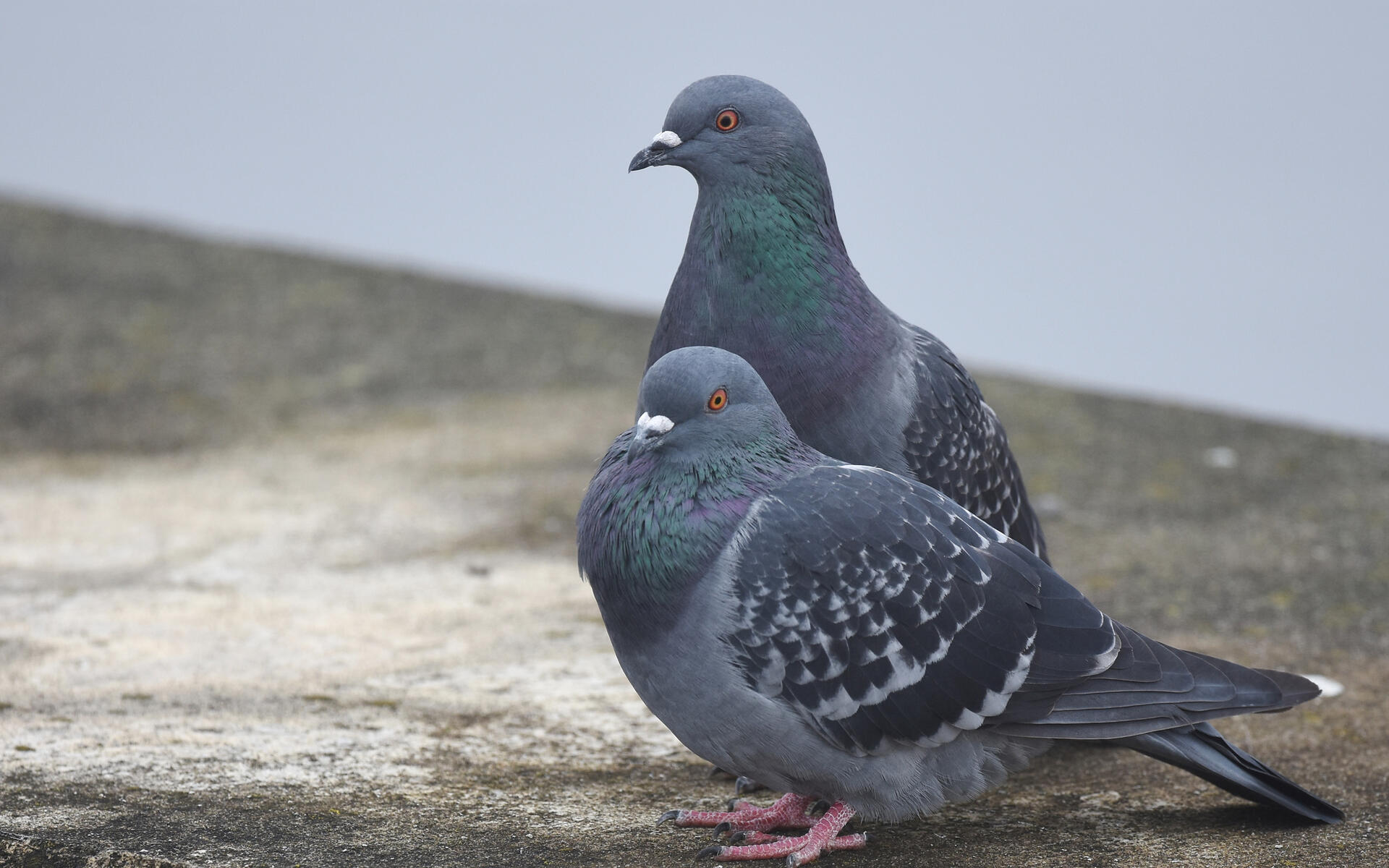
Silverfish

Description
- We all know that spidersSilverfish are considered household pests, due to their consumption and destruction of property. are our friends – they eat flies and mosquitoes and other bugs that we do not particularly like. But unfortunately, some of these spiders leave a bite that is not as friendly.
- Silverfish can live up to a year without food, but require a high humidity environment. They move fast and are typically nocturnal insects typically 13–25 mm long.
- Their flat bodies make them ideal hiders capable of squeezing into even the smallest cracks and crevices during daylight hours.
- Silverfish are found throughout South Africa and are typically seen in moist, humid areas in the home, such as bathrooms, basements, and attics.
Signs to look & listen for, or smell
- Spotting one doesn’t necessarily mean you have an infestation, but you have to consider it, given the quick, prolific and frequent birth rates of silverfish.
- Finding faecal matter that resembles small pepper corns or pellets – black and spherical.
- Holes in things such as laundry or linen, wallpaper, books, papers and cardboard storage boxes.
Benefits of having Pest Control Technologies
- Prevention is key to avoiding many infestations. The best way to control a silverfish population and limit future infestations is to develop a prevention plan.
- Reduce food sources. Keep cereals, flour, meal, pastas, pet foods, and pet treats in airtight containers. Vacuum carpets, flooring, and upholstered furniture regularly.
- Reduce water sources. Keep exterior areas well painted, gutters and downspouts free of debris, and landscaping graded to allow water to drain away from your home.
- Reduce harbourages. Seamless interior walls limit access to sites such as wall interiors and spaces between ceilings and walls.
- A professional company like Pest Control Technologies, can help develop a strategy for dealing with silverfish infestations and preventing future outbreaks.

Bedbugs

Description
- Bedbugs are small, oval, brownish parasitic insects of the cimicid family that feed exclusively on blood as they are obligatory bloodsucking insects. Bedbugs are mainly active at night, but are not exclusively nocturnal. They usually feed on their hosts without being noticed.
- Under certain cool conditions adult bedbugs can live for over a year without feeding, under typically warm conditions they try to feed at 5-10 day intervals, and adults can survive for about five months without food.
- Though strictly parasitic, they spend only a tiny fraction of their lifecycles physically attached to hosts. Once a bedbug finishes feeding, it relocates to a place close to the host, commonly in or near beds, box springs, bed frames, headboards or couches, including luggage, inside vehicles, within furniture, amongst bedside clutter—even inside electrical sockets and nearby laptop computers.
- Bedbugs can be transferred from one room to another or one apartment to another in the seams of the persons clothing, spreading the critters from bed to couch, etc.
- Most bedbug bites are painless at first, but later turn into itchy welts, on any area of skin exposed while sleeping. Also, the bites do not have a red spot in the center like flea bites do.
- Individuals are encouraged to call Pest Control Technologies (Pty) Ltd to eradicate bed bugs in a home, rather than attempting to do it themselves as resistance to pesticides has increased significantly over time.
Signs to look & listen for, or smell
- Bite marks, grouped together in a line or zigzag pattern, on parts of the body that are more likely to be exposed during sleep – the hands, neck, face, shoulders, legs and arms.
- Bites are small, flat or raised areas that may become inflamed, itchy, red or blistered
- Blood spots and the presence of bed bug faeces and cast skins found on one’s sheets or mattress as well as blood stains on your sheets and pajamas.
Benefits of having Pest Control Technologies
- Site inspections are done to ensure the correct treatment is prescribed and for public health reasons, individuals are encouraged to adhere to Pest Control Technologies guide and preparation before eradicate bed bugs in a home can begin.
- Eradication of bed bugs frequently requires a combination of no pesticide approaches and the occasional use of pesticides.
- Before any pesticides can be applied mechanical actions must be completes by the client, such as vacuuming up the insects and heat-treating (washing linen or matrasses with as hot water and soap as possible for as long as possible) or wrapping mattresses (when removing a matrass from one area - cover with plastic and carry it out and throw it out, in one action - don't let is stand somewhere as they will crawl out and infest the next room or flat).
- A detailed, leaving no "stone" unturned approach has been our secret to success when treating for Bedbugs.
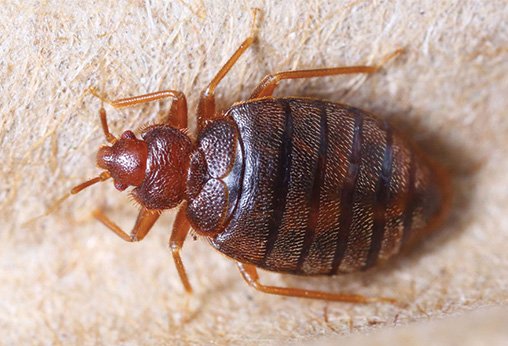
Fleas

Description
- Fleas are opportunistic arthropods that seek out our pets’ blood as a food source. Fleas are small flightless insects, external parasites of mammals and birds, they live by consuming the blood of their hosts. Adults are up to about 3 mm (0.12 in) long and usually brown.
- Their hind legs is adapted for jumping and enable them to leap a distance of some 50 times their body length.
- Fleas are principally a nuisance to their hosts, causing an itching sensation which in turn causes the host to try to remove the pest by biting, pecking or scratching. Fleas are not simply a source of annoyance, however. Flea bites cause a slightly raised, swollen itching spot to form; this has a single puncture point at the centre, like a mosquito bite.
- Flea bites often appear in clusters or lines of two bites, and can remain itchy and inflamed for up to several weeks afterwards. Fleas can lead to hair loss as a result of frequent scratching and biting by the animal, and can cause anaemia in extreme cases.
- Fleas are parasites that feed on humans and other warm blooded animals. When you have a flea problem you and your pets serve as the host. Fleas usually require warm and humid conditions to develop.
- There are several types of fleas, but the most common is the cat flea, which also feeds on dogs and humans. Fleas are attracted to body heat, movement, and exhaled carbon dioxide.
Signs to look & listen for, or smell
- If your dog or cat is continually scratching him or herself.
- Inspect your pet's bedding for signs of fleas. Small particles that look a little like salt and pepper may be flea eggs.
- Unusual red patches on the animal skin, hair loss, pale gums and flea dirty on the animals.
- Most human flea bites are found in the lower leg/ankle region.
Benefits of having Pest Control Technologies
- The best time to start a flea control program is in the late spring, prior to an infestation, since adult fleas comprise only 5% of the total flea population. To contain an active flea infestation, fleas must be controlled at every stage.
- Preparation by the client: Think about where your pets spend their time.
Then follow these steps:
- Wash pet bedding, blankets, linens, and throw rugs in hot water.
- Vacuum carpets thoroughly.
- Vacuum upholstered furniture.
- Vacuum baseboards and trim, and other places where fleas may still be hiding.
Contact Pest Control Technologies (Pty) Ltd to do a proper treatment. CHECK FOR FLEAS AND TREAT AGAIN AS NEEDED. Pest Control Technologies (Pty) Ltd have various options to choose from to sort out the flea problem. Effective flea control requires treatment of both the pet and the home, and the use of products that address the entire flea life cycle. We will need to use products that kill the eggs, the larvae, and the adults.

Carpenter Bees

Description
- Many people confuse Carpenter Bees with Bumble Bees, but Bumble Bees do not occur in South Africa. Carpenter bees resemble bumblebees in both size and appearance, but are not social insects. If you see a number of large bees hovering near the eaves of the house or drilling in wood, you have carpenter bees.
- The Carpenter Bee is a relatively large, robust bee. They visits flowers for pollen and nectar and in return, pollinates some flowers extremely efficiently.
- A female Carpenter Bee is engrossed in buzz pollination. In this type of pollination, The Carpenter Bee grabs the tightly closed stamens, the male fertilizing organ of a flower, in its front legs and buzzes by rapidly moving muscles in the body, including flight muscles. This causes the pollen to literally be shaken loose, and to fly off the flower and on to the bee’s body.
- When the Carpenter Bee leaves the flower the stamens flop open indicating to any other passing Carpenter Bee that the pollen has been taken.
- Carpenter bees do not eat wood.
- As the bee goes from flower to flower it transfers pollen off of its body onto a different flower. This ensures that the flower is not pollinated by its own pollen.
- Carpenter bees enters the wood, quickly turns 90°, then tunnels into wood, bamboo, and similar hard plant material, usually dead. They vibrate their bodies as they rasp their mandibles against hard wood, each nest having a single entrance which may have many adjacent tunnels.
Signs to look & listen for, or smell
- The entrance is often a perfectly circular hole measuring about 16 mm on the underside of a beam, bench, or tree limb. Carpenter bees do not eat wood. They discard the bits of wood, or reuse particles to build partitions between cells. The tunnel functions as a nursery for brood and storage for the pollen/nectar upon which the brood subsists.
- Carpenter bees are very large, and they have the unpleasant habit of hovering near their nest sites and chasing anyone who comes too close.
Benefits of having Pest Control Technologies
We treat the holes in early spring and again in summer to make sure all the carpenter bees made contact with the product. Then, in the fall, the client can fill the holes with wood filler. The bees won’t want to chew through the putty and will not be able to re-use the same holes.
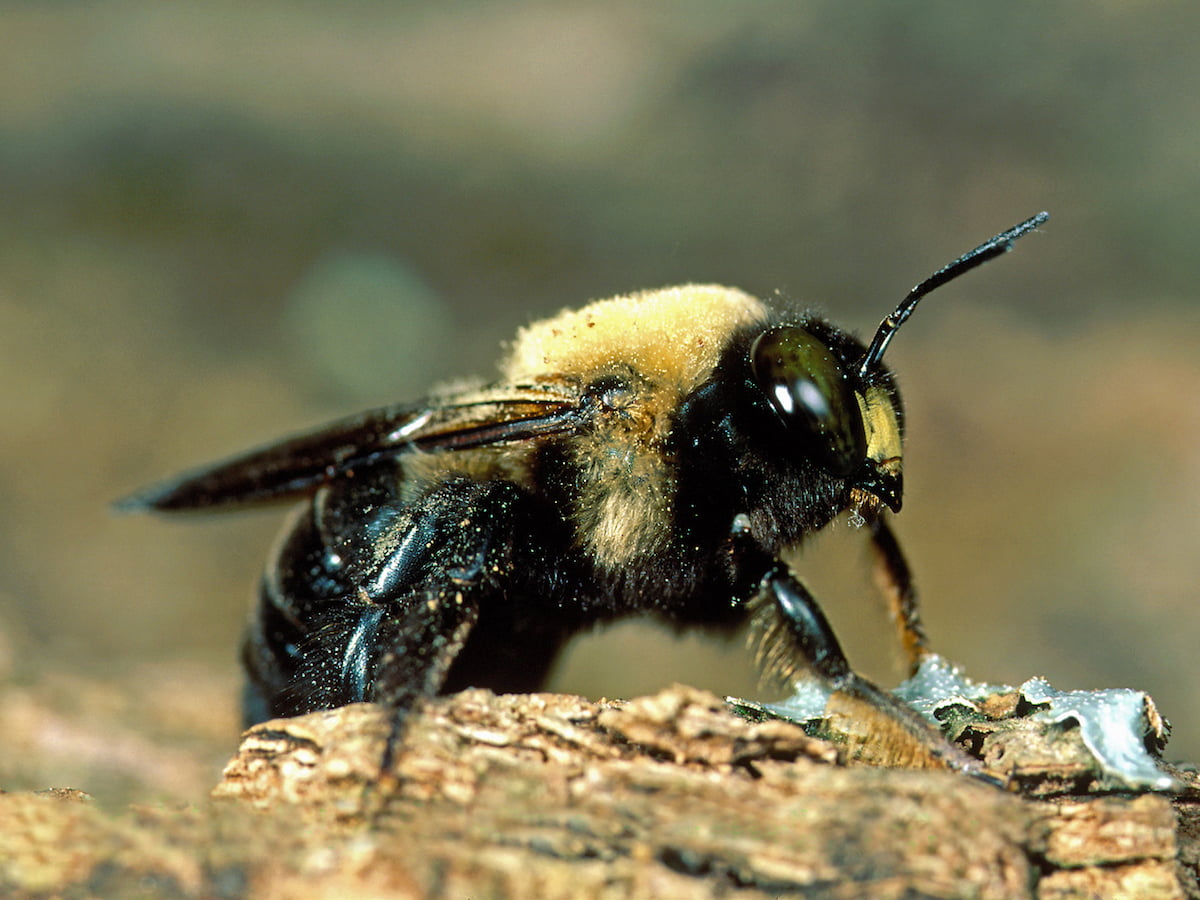
Ants

Description
- Ants = nuisance pest. Killing foraging ants - 10% of the nest - rarely solves an ant problem because the colony remains unaffected. If you spray and kill these ants, with just any DIY product to try ant control, the colony will simply send out more workers, and you'll never reach the queen. They are social insects, which means they live in large colonies -- 90% is under ground -- or groups. Depending on the species, ant colonies can consist of millions of ants.
- An ant can lift 20 times its own body weight.
- Some queen ants can live for many years and have millions of babies!
- Ants don’t have ears. Ants "hear" by feeling vibrations in the ground through their feet.
- When the queen of the colony dies, the colony can only survive a few months. Queens are rarely replaced and the workers are not able to reproduce.
Signs to look & listen for, or smell
- Live ants in the house or kitchen where food is prepared.
- The ants you see trailing in your kitchen are workers looking for any crumbs you've left behind. When they find the crumbs, they carry them back to the nest leaving a trail for other worker ants to follow.
- Ants nest’s is usually outside and looks like small piles of fine soil or dirt. They enter the building looking for food & water.
Benefits of having Pest Control Technologies
- We will inspect your home, perform proper ant species identification, and recommend a course of ant control.
- Ants will eat practically any kind of food, but are especially attracted to sweets or starch. This fact determines the kind of ant control use for the control of ants.
- To do proper ant control, we first eliminate the ones you don’t see to get rid of the ones you do see: It sounds strange, but it's true. This is because the queen just stays in her nest (where you can’t see), being fed by the workers (the ones you see) and continuing to reproduce more ants. So you can spray and spray the ants you see, and she'll just keep making more to take their place.
- During our ant control, we deposit the insecticide at the appropriate areas and the ants will carry the insecticide back to the nest, but it can take several days to eliminate the colony, or even a few weeks if the colony is very large or it has several queens.
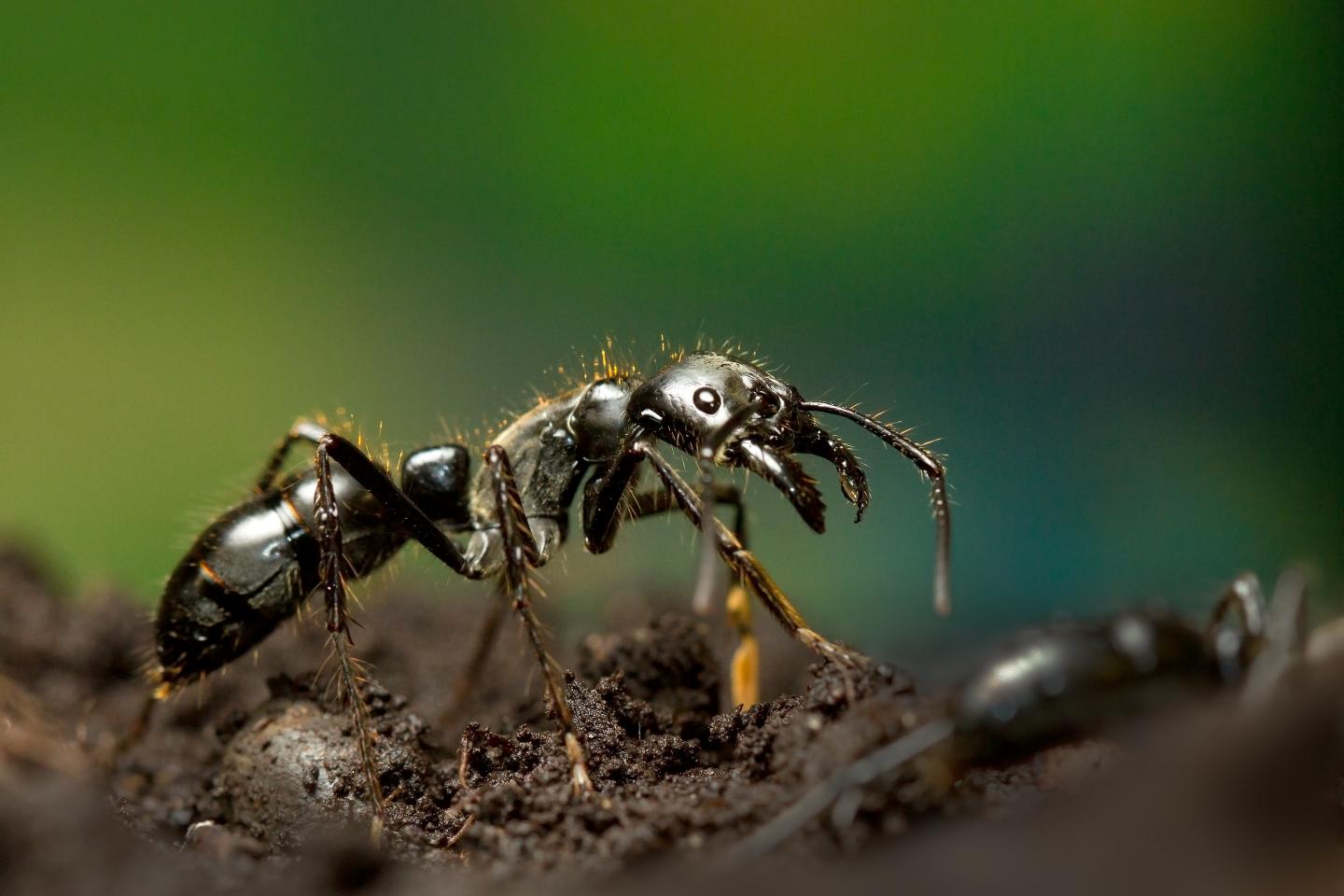
Bees & Wasps

Description
- Bees are closely related to wasps and ants, known for their role in pollination and for producing honey & beeswax. While bees can benefit the environment in many ways, it is inconvenient and possibly dangerous to let a bee hive thrive near your home.
- Bee swarming typically occurs in colonies that are thriving and with robust populations. Weak colonies of bees may not swarm until they become stronger and larger in population. Bee colonies may become weak due to starvation, disease or failing queens. Several factors can contribute to the occurrence of a swarm, such as seasonal changes and overcrowding.
- It is important to properly identify the particular species living near your home, as bees are often mistaken for wasps due to their similar physical characteristics. There are different elimination processes for wasps, so effective treatment relies upon proper identification.
- Bees will not be treated unless impossible to remove, but that is the job for the beekeeper, as they have several methods of trying to get the bees out rather than killing them.
- While the vast majority of wasps play no role in pollination, a few species can effectively transport pollen and pollinate several plant species.
- Social wasps are considered pests when they become excessively common, or nest close to buildings. People are most often stung in late summer, when wasp colonies stop breeding new workers; the existing workers search for sugary foods and are more likely to come into contact with humans; if people then respond aggressively, the wasps sting.
- Wasp nests made in or near houses, such as in roof spaces, can present a danger as the wasps may sting if people come close to them.
- Stings are usually painful rather than dangerous, but in rare cases, people may suffer life-threatening anaphylactic shock.
- Wasps are killed to prevent any harm to residents.
Signs to look & listen for, or smell
- Live bees in and around the building or flowers.
- Visible bee hive in hollowed out trees, water fountains, wall cavities, etc.
- Wasps make their nests from chewed wood pulp and saliva, giving them distinctive papery walls. Nests are usually built in sheltered spots with easy access to the outside: wall cavities, roof spaces, under eaves, etc.
Benefits of having Pest Control Technologies
- The only way to rid your home of bees is to remove the hive entirely. Pest Control Technologies have several beekeepers on speed dial to assist clients to remove and relocate bees.
- Pest Control Technologies can remove wasps and nests from your home without any incidents.

Cockroach

Description
- Cockroaches are insects of the order Blattodea, which also includes termites. About 30 cockroach species out of 4,600 are associated with human habitats. About four species are well known as pests.
- The Blattodea feed on human and pet food and can leave an offensive odour. They can passively transport pathogenic microbes on their body surfaces, particularly in environments such as hospitals. Cockroaches are linked with allergic reactions in humans.
- Cockroaches can live for a few days up to a month without food, so just because no cockroaches are visible in a home does not mean they are not there.
- German cockroaches have a phenomenal rate of reproduction. One female cockroach and her offspring can theoretically produce hundreds of thousands of cockroaches in just one year!
- German cockroaches love heat and humidity, spend most of their lives hidden and protected, they aggregate (crowd together) and can change their normal behaviour.
- The female German cockroach protects her egg case and carries it for as long as a month, dropping it just before it hatches.
- German cockroaches are easily transported or imported. It comes from the grocery store, suppliers (commercial) or your friends and neighbours. When you buy groceries, they can catch a ride in one of the bags and can be inadvertently introduced into your pantry or your kitchen cabinets. They leave faecal trails with an odour gradient.
- While they do not bite or sting they do feed and live in areas that harbour dangerous bacteria, such as sewers, garbage disposals, and dumpsters. Unfortunately, they introduce bacteria into residential and commercial environments by carrying it on their body.
- American cockroach, perhaps the most recognizable due to their relatively large size. The insects frequently invade homes and other buildings foraging for food supplies, causing infestation problems that can quickly lead to more serious issues. They feed on a great variety of foodstuffs including bread, fruit, leather, starch in book bindings, paper, glue, skin flakes, hair, dead insects and soiled clothing.
- American roaches can run very fast, and they usually scurry into a dark area. If they are startled, American roaches may even fly.
- Cockroaches are “filthy” pests. They can spread disease, contaminate our food and cause allergies and even asthma. Cockroaches can pick up germs on their legs and bodies as they crawl through decaying matter or sewage and then transfer these germs to food or onto food surfaces, they are proven or suspected carriers of the organisms causing diarrhoea, dysentery, cholera, leprosy, plague, typhoid fever and viral diseases such as poliomyelitis.
Signs to look & listen for, or smell
- The most obvious sign you have a roach problem is actually seeing one. The best time to spot roaches is during the night.
- Depending on what type of roach as well as the size and level of infestation, the appearance of roach faeces resemble anything from tiny specks of pepper to brown stains to coffee grounds.
- When cockroach eggs hatch, the oothecae (egg case) are left behind, providing undeniable evidence cockroaches have taken a liking to your building and don’t plan to leave on their own
- Cockroaches can produce a pungent, musty smell that gets worse the longer the infestation goes on
Benefits of having Pest Control Technologies
- We will do a thorough inspection of the client’s home, looking to find cockroach activity. Identify the hiding places of the cockroaches and trying to find entryways that especially American cockroaches could be using to get into your home.
- The solutions we use is colourless, odourless and non-toxic to humans. A service report is issued to all clients and all food handling units, such as restaurants, deli's and take-aways after each treatment.
- Keeping cockroaches out of your home is a recurring process, as they are so easily imported from outside, not a one-time treatment (especially in restaurants or food handling units). We recommend regular treatments to keep the area cockroach free and not leave it to reach critical proportions.
- Pest Control treatments do not replace good hygiene practices.
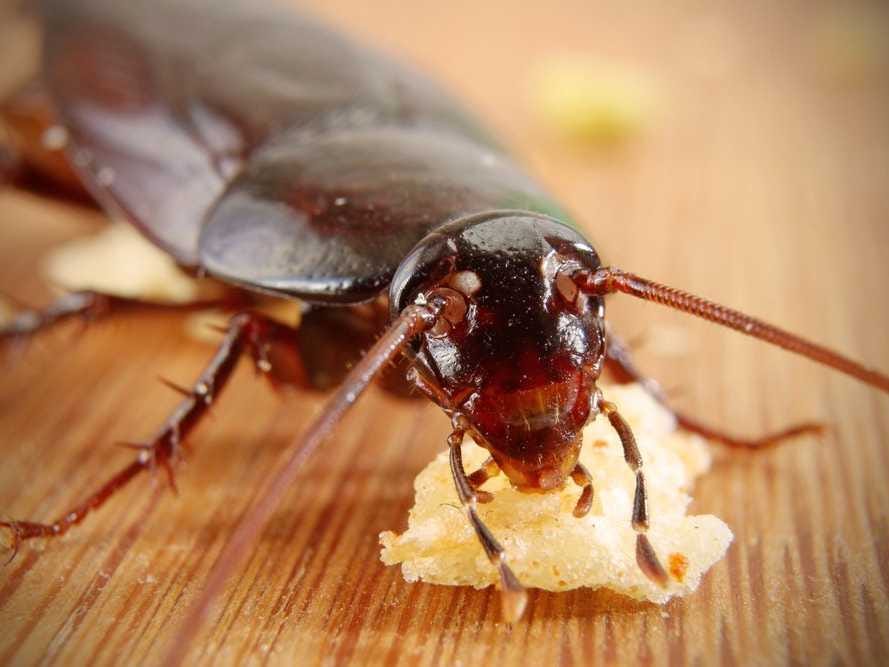
Mole Crickets

Description
- Mole crickets are destructive pests on lawns, fearsome looking insects with cylindrical-bodies about 3–5 centimetres long, with small eyes and shovel-like forelimbs highly developed for burrowing.
- Most of their life in these stages is spent underground, but adults have wings and disperse in the breeding season. They vary in their diet; some species are vegetarian, mainly feeding on roots.
- Their damage appears as brown spongy areas within normal green grass. Upon inspection you will notice the grass has been eaten just below the surface, separating the plant from its roots. Mole crickets are especially fond of Bermuda and Kikuyu grass, but have also been detected on most other lawn grasses and even plant roots.
- Their main tunnels are used for feeding and for escape: they can dig themselves underground very rapidly, and can move along existing tunnels at high speed both forwards and backwards.
Signs to look & listen for, or smell
- Watch out for large holes in grass, 1-2cm in diameter or small piles of soil scattered on grass.
- In areas where there has been tunnelling activity, the grass will brown and die.
- Females have been heard making loud chirp sounds as they rub their wings together.
Benefits of having Pest Control Technologies
Treatment for Mole Crickets is an all over application of affected area, preferable at the first signs of an infestation. Application may have to be repeated when necessary.
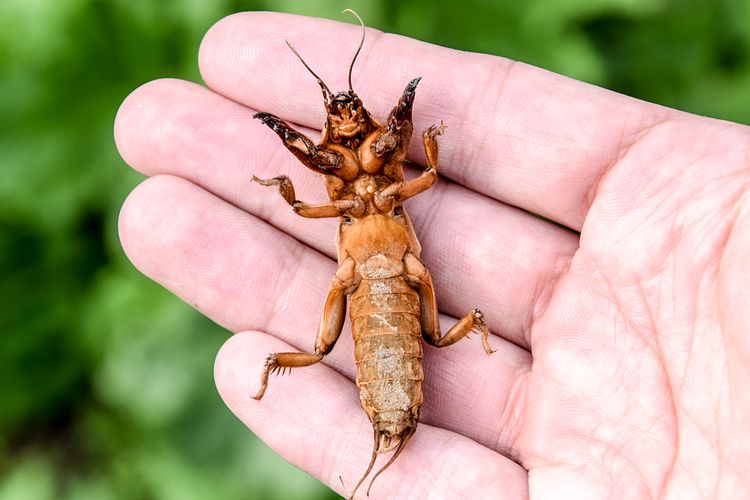
Flies

Description
- We know that flies are a common pest problem in South Africa. They're as part of our culture as strikes and rugby. However, they are a pest in every sense of the word.
- Flies are often abundant and are found in almost all habitats in the world apart from Antarctica. They include many familiar insects such as house flies, blow flies, mosquitoes, gnats, black flies, midges and fruit flies.
- House flies are major carriers of disease and can infest all types of premises. A single house fly can carry over one million bacteria. No less than 60 different diseases can be transmitted, from salmonella to dysentery. Most flies can reproduce quickly in warm weather.
- Contributing factors to a fly infestation are poor sanitation e.g. fermenting food under equipment, open waste areas, inadequate screening of doors & windows or where animal farms in the suburbs. They thrive in moist habitats and organic matter, and are attracted to breeding grounds such as animal housings, chicken and dairy farms and stables.
- Without proper hygiene and cleaning standards and ineffective or regular fly control programs, these fly populations will expand and will spread into other areas and then become a problem in local houses, restaurants, schools, etc.
Signs to look & listen for, or smell
Seeing one or two flies is no indication of an infestation but several flies, particularly at one time, may be of greater concern.
Benefits of having Pest Control Technologies
- Fly control relies greatly on teamwork between the client and the pest control company. Pest Control Technologies will make recommendations to improve the fly control management plan at a specific client, to reduce the fly population.
Free advice: Here's how to keep flies from breeding in or near your home
- Clean up all pet and animal faeces promptly.
- Dispose of kitchen scraps and other organic waste properly. Seal off food waste in plastic bags before disposing of it.
- If you save kitchen waste for your compost heap, add some sawdust to your scrap bin to help absorb moisture and odours.
- Dustbins and dumpsters are favourite breeding areas for flies. You can significantly reduce fly populations by keeping lids tightly closed on dust bins, and making sure the bins have no holes.
- Rinse empty food containers, soda cans, beer bottles, and pet food cans before tossing them in the dustbins.
- If you have fruit trees in your yard, pick up any fruit that falls on the ground.
- Install and maintain tight-fitting window and door screens.
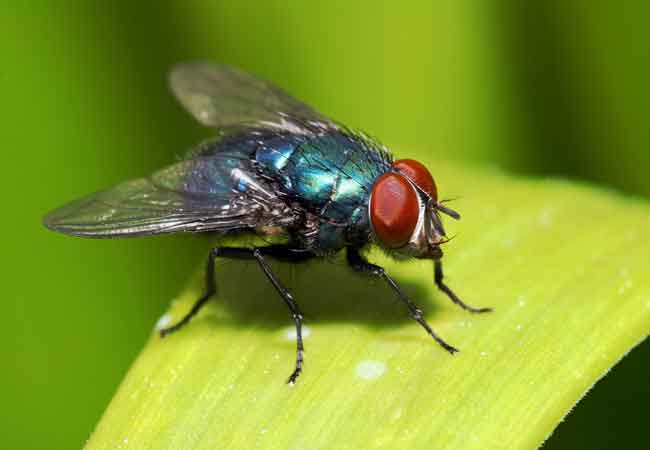
Harvester & Subterranean Termites

Description
Harvesters Termites
- They forage for grass during mid day, workers are often observed outside the nest.
- Harvester termites can do serious damage to lawns in particular and flower beds, they chew off pieces of the grass and carry it into the nest.
- A system of spherical hives may be located from near the surface to more than 6 m deep. The hives may be 60 cm wide and are interconnected by galleries. Loose particles of excavated soil are brought to the surface and dumped at various points around the nest.
- Soon after rain showers, swarms of flying termites, alates (winged reproductives) emerge from their underground nests during summer evenings. When far enough from the parent nest, they land, shrug off their wings and start searching for a mate. The pair then excavates a burrow to start a new colony. A single queen can lay up to 25 000 eggs per day.
- After some four months, the nest is sufficiently developed to send foraging workers to the surface.
Subterranean Termites
- Subterranean Termites belong to the insect order ISOPTERA. Although they are not related to ants, they are often referred to as 'white ants' because they, just as ants, are social insects living in large colonies.
- Subterranean Termite nests can be 290m² wide and more than 8m deep. The queens are located at any level in the nest and lay eggs at a steady rate every day, for seven to 10 years. The queen and king are groomed and fed by workers.
- These termites require contact with the soil, which provides optimal temperatures and moisture for their survival. Subterranean termites build underground nests connected to aboveground food sources via mud tunnels.
- Termite workers will, however, remove all palatable wood from the inside of wooden structures, and damage is often only noticed when a structure is hollowed out completely. Subterranean termites can and will destroy unprotected wooden structures and timber if given half a chance. Mud plastered on walls or over impenetrable foundations to provide lines between the nest and food, is also a tell-tale sign of a subterranean termite infestation.
- Termites may excavate the wood so that only a very thin layer of wood is left on the surface of the cavity and the outside.
Signs to look & listen for, or smell
Harvesters Termites
Piles of loose soil, rarely higher that a few cm’s, with pieces of cut grass or stems in the soil.
- Patches where they cut and harvest grass, carrying it into nests. It appears as if the green grass has been chewed off the stalk.
Subterranean Termites
- Mud Tunnels: Subterranean termites maintain their headquarters in the ground and build "mud tubes", pencil-size, that connect the nest (moisture) to the food source (wood).
- Damaged wood is usually found in areas where water damp is present, kitchen, bathrooms & also in spare rooms where human activity is low. Wood may also feel wet or clammy.
- If a cupboard or area is infested, a damp muddy musty smell will be present.
- If active nest is present a soft crunching/chewing noise may be heard.
- Fine white mushrooms may also be visible at active nest areas.
Benefits of having Pest Control Technologies
Harvesters Termites
We inspect the lawn and identify the signs or harvester termite damage. The treatment can be done immediately but has to be repeated in 3 to 6 months.
- An affordable, highly effective solution is available from Pest Control Technologies.
Subterranean Termites
- Applying liquid termite control chemicals (Termiticides) can be a complicated and difficult job, requiring lots of specialized equipment & termite control training that Pest Control Technologies, have and can do for you.
- A preventative treatment would be forming a chemical barrier with a liquid termiticide for Termite Control. If you leave the treated soil, undisturbed, this barrier will last about 5 years.
- If you need a clearance letter (COC/Beetle certificate/Entomology report) or proof of termite control, this needs to be done by a licensed pest control operator. Mortgage companies won't accept proof of termite clearance other than from a certified company.
- With a complete treatment for Subterranean Termites we issue a 5 year guarantee on the treated areas.
